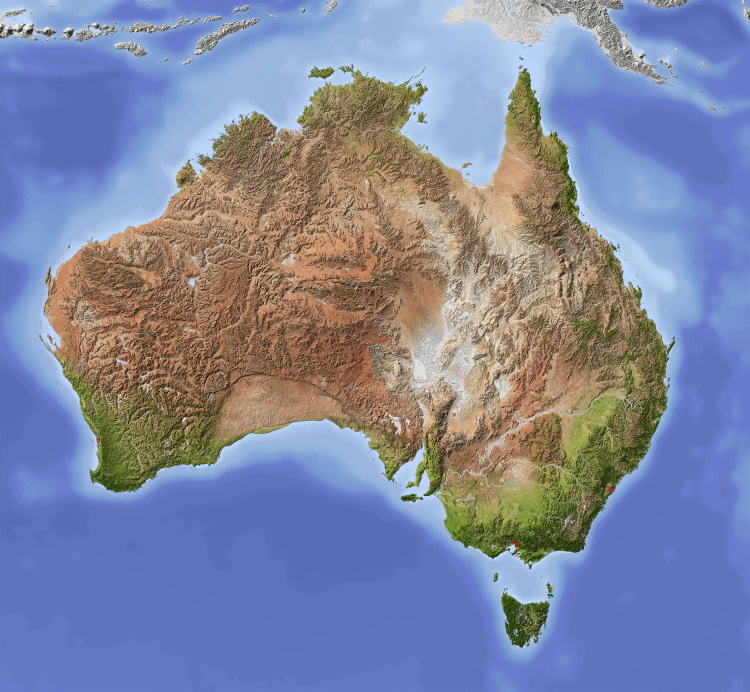And how much of that “cycling infrastructure” mileage and spending is on easy yet expensive and useless examples such as along freeways, in islanded suburbs where calm backstreets should suffice, or just mystery unconnected segments?
Does anyone know of any studies on this?
I don’t think I’d call along freeways “useless”. Easy, yes, comparatively. But I’d say it’s incredibly useful as trunk infrastructure.
But you’re right, it’s much less useful when not part of a proper connected network. I don’t know of any studies into this, but that would be really interesting to see.
A couple of other things that frustrate me: when there is good trunk infrastructure, but it loses priority at intersections. I’m talking the North Brisbane Bikeway at Albion Rd & McDonald Rd/McDonald Rd & Blackmore St, where the Primary Cycle Route crosses a Neighbourhood Road, but the bikeway does not run continuously across that intersection. And on the Southwestern Freeway/Centenary Freeway bikeway when it crosses Witton Rd, where it has to give way to a small secondary road, and Fig Tree Pocket Rd, where it has to give way to both the on and off ramps of the highway, rather than going under or over the main road like the Gateway cycleway always does, or simply requiring cars to give way at a wombat crossing.
I live 15km from work and public transport doesn’t put you anywhere near it and there are no convenient bicycle paths. One of the most direct routes requires crossing the same road like 3 times or sharing the road with a 70km speed limit.
It could be such an easy ride but the considerations have not been put in place to make cycling a serious option for people that live nearby
Yeah it really sucks.
And way too many people, in your situation, would come away saying cycling doesn’t work. Instead of blaming the bad planning. Which only increases the chance of bad planning in the future, because of a lack of support for better planning.
You’re right. You can’t have a hodgepodge of cycling infrastructure that doesn’t lead anywhere and blame people for not using it. Cycle paths need to have planning and purpose and then you’ll see some actual uptake
Absolutely criminal numbers. Considering we know that cycling infrastructure has an RoI of at least 2, while roads have an RoI less than 1, the spending on cycling infrastructure should be much higher. I’ve seen 20% as the figure that should be spent, instead of the current 0.1%.
I remember seeing some numbers that every kilometre driven actually costs the EU money in terms of maintenance and the environment, whereas ever kilometre cycled was a net gain
Why are they focussing on federal funding only? I would expect federal funding to go largely to the sorts of roads which are important on a broad scale but less desirable for cycling or walking - freeways, highways, major arterial roads, and so forth. State and local government are the levels I would expect to find the majority of cycling and walking investment, it seems odd that these are omitted.
The Commonwealth funds all sorts of projects. They contributed, for example, to Brisbane City Council’s big Kangaroo Point green bridge. That bridge was one of the “five green bridges” that were a major campaign promise by the LNP in 2020. Unfortunately in part due to funding “issues” (read: prioritising roads for cars), that “five” has been watered down to “three”, two of which have been delivered as of today, and the third hasn’t even been up for community consultation on the design or alignment yet (it was, but even that process got stopped cold and will have to be restarted from scratch after the 2022 floods caused BCC to cut all cycling funding—but, again, not road funding).
BCC should fund more of this, as you say. But they don’t. And in the face of poor investment from Councils, it would be helpful if the Commonwealth were spending more than one measly dollar per person. That Commonwealth funding, even if the project itself was delivered by state and local governments, would make it easier to get more done. Maybe BCC wouldn’t have cut from 5 to (maybe) 3 if they knew the Commonwealth would significantly help fund them, rather than the current begging for scraps.
As another example, the Commonwealth famously spends a lot on “black spot” funding. They should make it a condition of receiving black spot funding that the intersection and its approaches are upgraded with best practice safe cycling infrastructure (along with a robust definition of “best practice” that takes cues from successful designs from overseas, rather than relying on the current clearly inadequate definitions Australian road engineers use). Instead, a lot of black spot “upgrades” end up making the roads they’re on more dangerous for cyclists.
My point was that if you’re writing an article talking about how much Australians spend on cycling/walking infrastructure you should at least mention that federal numbers are not the whole picture and that federal is not the level of government that is going to cover most of said infrastructure. Omitting this smacks of the author just looking for a low number to draw attention/outrage.
That’s sort of fair, but it’s the same argument people use to justify the Commonwealth spending more on private schools than public. “Oh, yeah they do, but the state governments spend more on public schools.” That may be true, but IMO every level of government should have budgets that stand up to scrutiny.
You’re right. About 1% of our transport infra spend goes to active transport. And it’s mostly from state and local governments. It’s still very low, but not as disproportionate as the article suggests.





